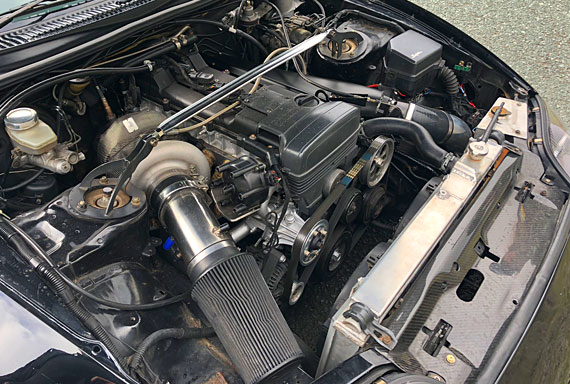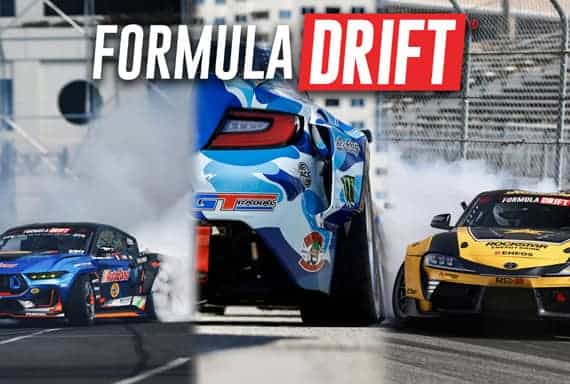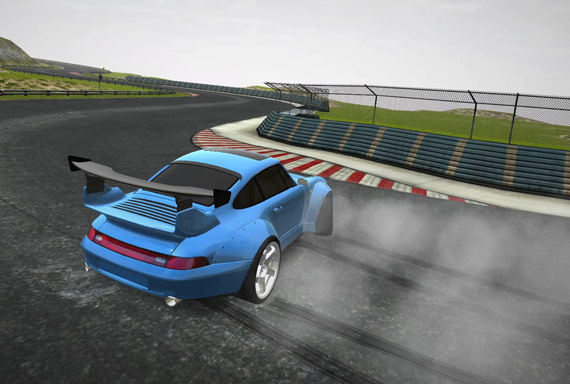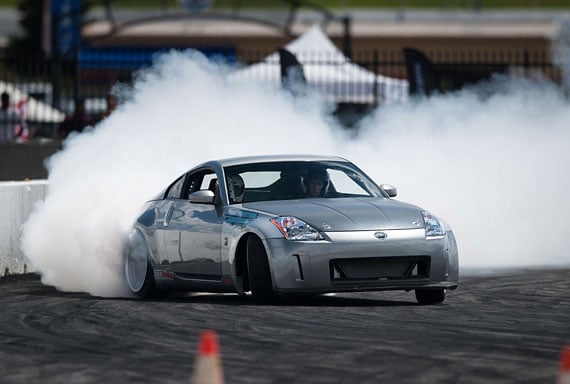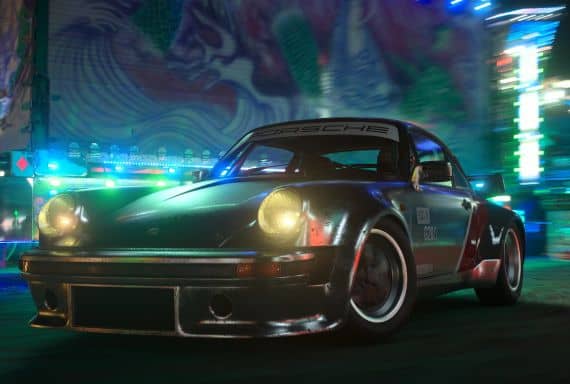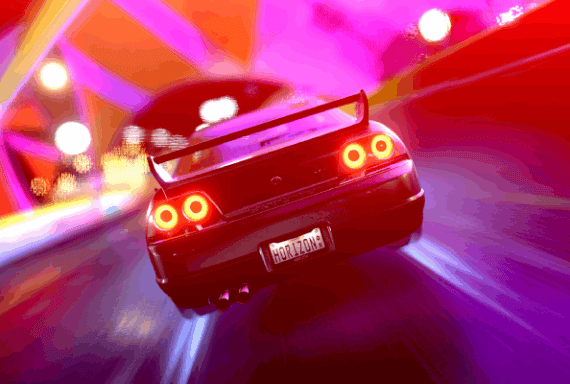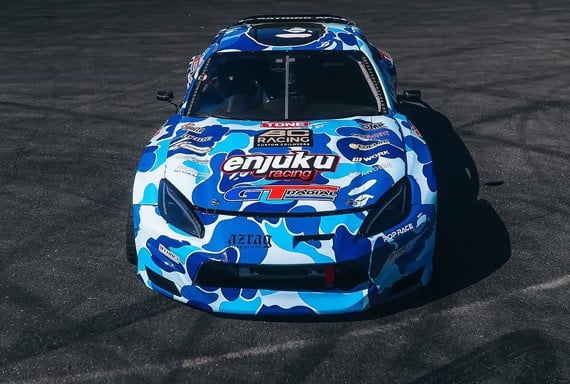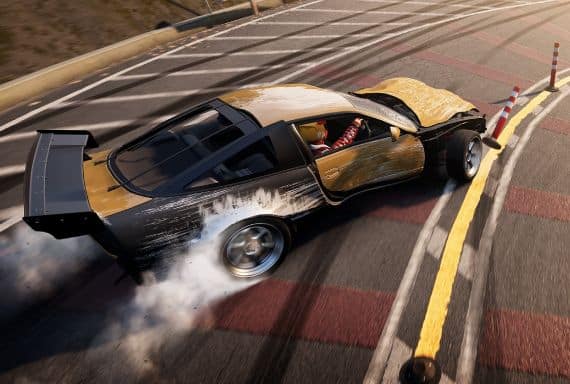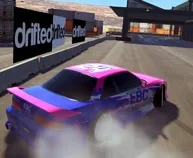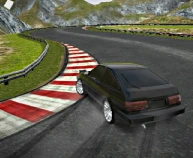Budget Drift Cars That Are Still Cheap In 2025
From Swedish tanks to Japanese drift missiles, these budget-friendly cars prove you don’t need deep pockets to get sideways in 2025.
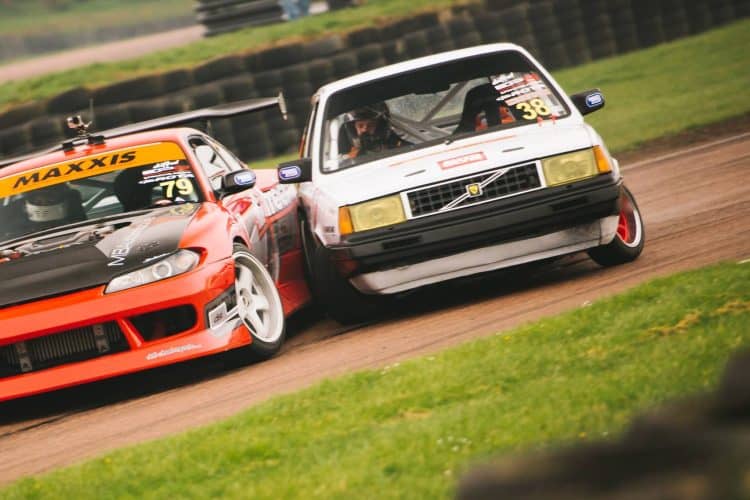
Introduction
We’re all too aware that trying to find a bargain-priced drift car in 2025 isn’t quite the same as it used to be. We remember back in the day when you could scroll through the classifieds with pages of cheap Nissan 240SXs on offer for pocket change.
If we compare the typical prices now, comparing the average $1k drift missiles from the early 2000s. Well, you’re looking at nearer $4-5k for something now. Meanwhile, many of the $5k-ish offerings at the time have now skyrocketed to $15k+.
As an example, for those not already aware of how crazy 240SX prices are now, how does $31k sound for a stock 240 with 119K miles on the clock? We wish we were kidding!
Thanks to ‘Cash for Clunkers,’ the $3 billion US federal scrappage program, far too many perfect potential drift weapons met the crusher way too soon, leaving far fewer offerings on the marketplace. (We won’t deny that many of them met their fate at the track, too!)
What remains now is mostly a bunch of overpriced “I kNoW wHaT I gOt!!!” marketplace listings. Throw in the drift tax (yep, that’s a thing) and the JDM tax (double whammy), and you start to wonder if it’s even still worth trying to find a reasonably priced drift car these days. (Teaser: It is!)
While the crazy $1k glory days may be long gone, you shouldn’t give up hope of finding something decent in 2025 for cheap. Things have obviously changed, but plenty of drift-friendly platforms remain affordable, while some awesome modern alternatives have even been given hefty discounts in recent years.
On top of that, many of these cars are actually becoming decent investments – assuming you don’t send them straight into a wall!
Initial Considerations
Your first decision will be whether you want to buy a stock car or one with basic mods. Hoping to find a 1,000+ horsepower 2JZ-swapped big-angle monster? If so, this budget article probably isn’t gonna be the one for you!
We recommend playing it simple with these mods if you want to start stock. If any of them aren’t already installed, you’ll need to price them into your considerations to get the car sideways-ready:
- Rear-wheel-drive – Non-negotiable. Sorry, FWD Honda heroes!
- Welded/locked diff – Unless the car already has an LSD/welded diff, budget $100-300, depending on whether you or the homies are handy with a welder.
- Manual transmission – We’re not saying auto is impossible, but… It’s uhh.. Not out first choice.
- Bucket seat(s) & harness(es) – Unless you enjoy ending up on the passenger’s lap mid-drift, we recommend these. We always recommend buying safety gear brand new, if you can afford to do so. (Boring, I know!)
- Coilovers – Even the cheaper offerings ($500ish) will be far superior to stock setups.
- Hydro handbrake & racing wheel – Super handy to have, but not deal-breakers. Try to tick off as many of the above as you can first.
Stock Or Drift-Ready?
While it might upset the ‘bUiLt NoT BoUgHt’ crowd, buying a pre-modded drift car will often save you quite a bit of cash. We recommend researching the cost/labor of having those parts fitted to a stock version of the car you’re interested in.
One downside of drift-ready cars is that they might have spent most of their life bounced off the rev limiter. On the other hand, the marketplace listing with a single 80-year-old owner (it still happens!) isn’t quite so likely to have had a hard life (body panels aside!)
If it’s not obvious already, it’s worth mentioning that most of these cars are on the older side, so make sure you check the engine as well as you can and look for rust in every potential spot on the car.
Drift builds often spend the weekend getting thrashed a few times a year, then sit neglected on the driveway for far too many months waiting for repairs. So, try to avoid those that will likely cost you more to fix the day you get it than the price you paid for the car itself!
Now, let’s look at the drift cars you can (hopefully) afford to buy in 2025 without selling a kidney…
Jump To Section
BMW 3 Series
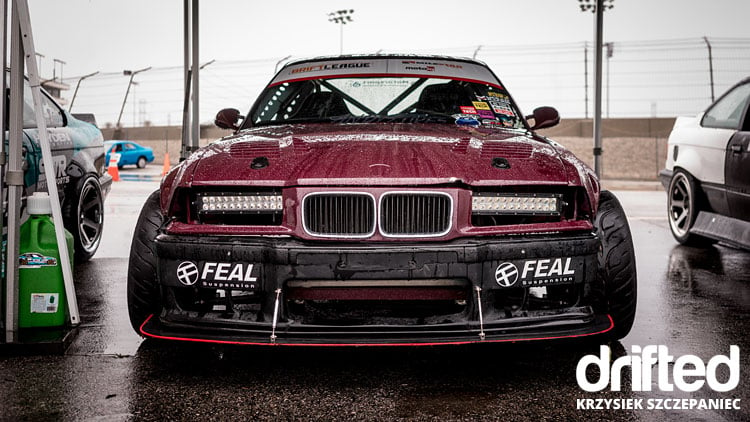
While it isn’t likely to turn any heads at the track (since everyone and their dog seemingly has one), there are plenty of reasons why the 3 Series remains so popular and affordable.
For the ideal options in 2025, look at the E36 and E46. These two generations hit the perfect mix of cost and capability. You can still snag a fairly high-mileage E46 for under $5k, while E36s can be even cheaper if you’re willing to do a bit of searching and/or maintenance.
Both rock the 50/50 weight distribution and come with solid engines straight from the factory. The M50/M52 in the E36 and M54 in the E46 will happily drift all day without throwing a tantrum.
Our recommendations would be:
E36 (1990-2000)
As with everything, they’re getting harder to find clean examples, but when you do:
- Budget: $3,000-6,000 (fairly decent ones can be found for around $4k)
- Best model: 328i (the extra power does make a difference)
- Watch out for rear subframe cracks.
This is a great entry-level drift weapon. The 328i and 325i engines are your best bets. Most non-M E36s came with open diffs from the factory, so consider welding the diff or an aftermarket LSD.
E46 (1997-2006)
- Budget: $5,000-8,000 for something drift-worthy
- Best model: 330i
- Budget for subframe reinforcement plates (unless you enjoy expensive surprises)
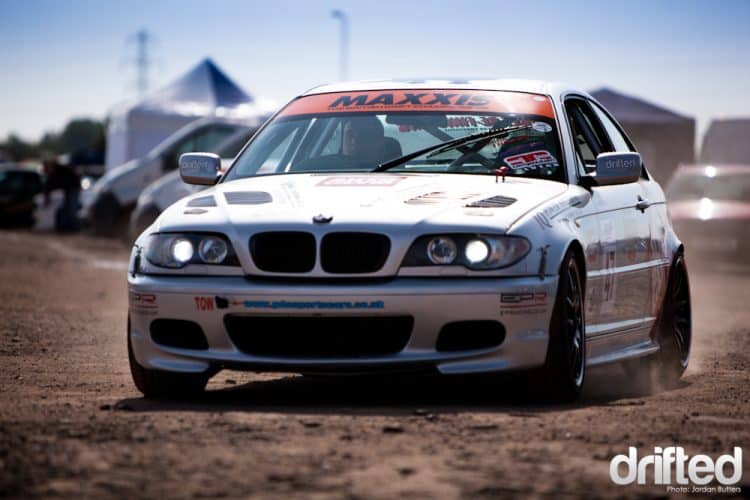
The (arguably) slightly superior choice. The 330i is the golden ticket here – the ZF trans and 3.46 diff ratio (from the auto) along with a welded diff/LSD are basically made for skids. While the 325i is still decent, the 330i’s extra grunt makes a noticeable difference when you’re trying to hold those longer slides.
Why have we not included the E30? Well, unless you’ve got money to burn, forget it. It’ll cost you way too much, and the above are superior in almost every way. The E30 might be a better investment, but we’re not looking for garage queens.
What about the E9x? Sure, they’re newer, fancier, and (controversial opinion) better looking, but they’re also heavier, far more complex, and the diff setup isn’t exactly drift-friendly. Plus, when something electronic inevitably goes wrong, you’ll need a computer science degree to fix it.
While the 3 Series might not be the most exciting or unique, they’re so common as budget drifters because they just work. Plus, they make surprisingly decent daily drivers.
Mazda Miata
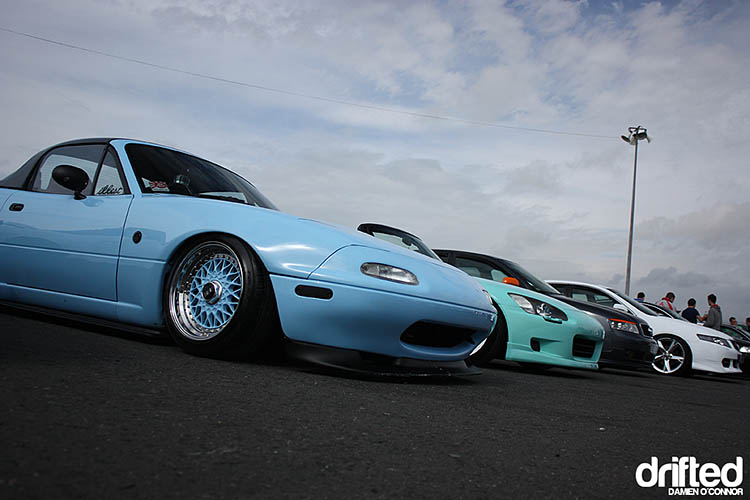
While prices have definitely crept up over the years, Miatas remain affordable if you’re not looking for a perfectly clean example. Realistic prices range from around $5-10k, depending on how perfect you want it to be.
One of the main benefits is the short wheelbase and perfect 50:50 weight distribution, which make these ideal for learning proper technique.
Sure, there’s only around 116-142hp when stock, but the lightweight chassis (2,100-2,500 lbs) means you don’t need massive power, especially if you’re just starting out. You’ll learn momentum and weight transfer instead of relying on raw horsepower to save you.
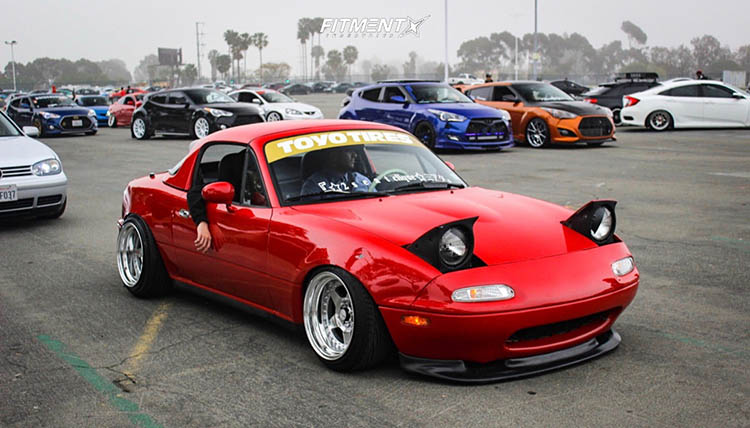
For drifting, target the 1994-1997 NA or any NB with the Torsen LSD. The Sport Package NBs are ideal – you get Bilstein shocks, a strut tower brace, and an LSD straight from the factory.
Earlier 1.6L cars can be found cheaper, but the 1.8L’s extra grunt makes a noticeable difference. Plus, if you want to add power, the 1.8L handles boost better.
Our recommendations would be:
NA (1989-1997)
- Budget: $3,000-7,000
- Best models: 1994-1997 with 1.8L and factory LSD
NB (1998-2005)
- Budget: $4,000-8,000
- Best model: Sport Package with Torsen LSD
- Slightly stiffer chassis and better suspension than NA
You’ll definitely want to look out for rust on both models, especially rear quarter panels and rocker panels. They’re both known for suffering from this, especially in saltier areas.
Consider finding one with some slight mechanical issues but good bodies – working on these simple engines is way easier on these than rust repair (for most!)
Nissan 350Z
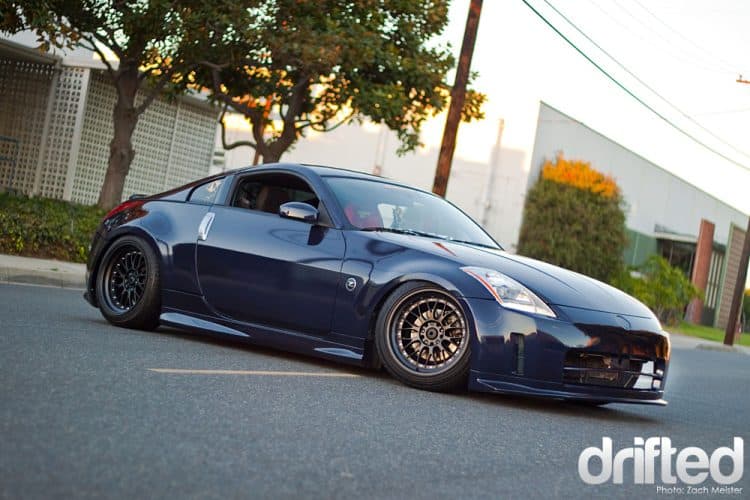
While 350Z prices have risen a little in recent years (as with everything, it seems!), you can still snag one for around $5-7k, but a lot of them would’ve lived pretty hard lives at this point!
The 350Z has two main offerings – the VQ35DE (2003-2006) and VQ35HR (2007-2008).
The earlier DE pushes out up to 300hp and loves to party in the low end, making it super forgiving for learning to drift. The torque peak at 4,800 RPM means you won’t have to bounce off the rev limiter just to keep things sideways.
The HR pushes out 306hp and revs to 7,500 RPM. It’s got less low-end grunt but rewards smooth inputs, making it ideal if you’re already comfortable with your drift game.
Pre-2005 DEs love drinking oil, and the “Rev-Up” engines (2005-2006) are even thirstier. The HR fixes these issues but brings its own party tricks – mainly expensive gallery gasket failures.
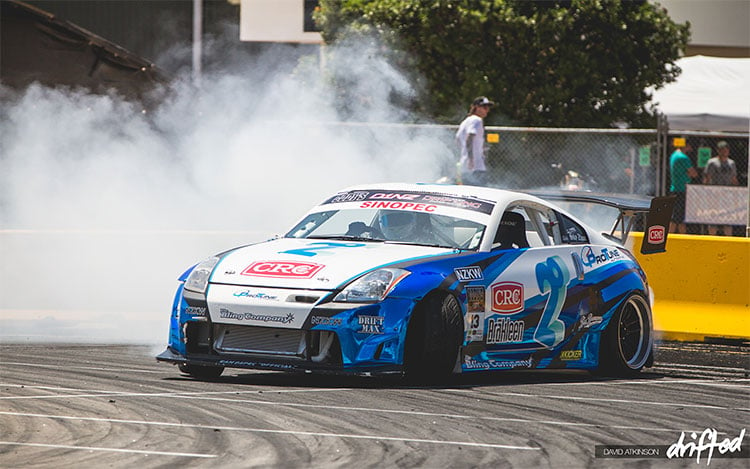
Transmission-wise, anything before 2005 uses the weaker CD00x box. The later CD009 (2005+ DE and all HR) is much more drift-friendly.
Our recommendations would be:
2005-2006 (DE engine)
- Budget: $5,000-8,000
- The sweet spot of affordability and durability
- Keep an eye on oil consumption
2007-2008 HR
- Budget: $7,000-12,000
- More powerful and reliable, but also more desirable
- Check the gallery gaskets
The 350Z might be heavy (3,200-3,400 lbs), but the aftermarket support and tuning potential are massive. Parts are everywhere, whether you’re keeping it stock or planning a big turbo build.
These cars have probably lived a hard life, so be sure to give the engine a good look-over. Check the subframe (especially pre-2007), and (as always, it seems) look for rust.
Infiniti G35
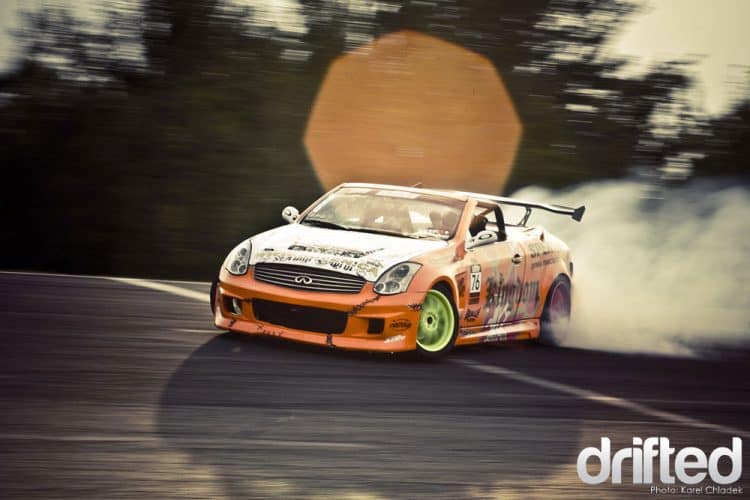
Known as the 350Z’s luxury sibling, the G35 is often a far more affordable alternative. They’re often available for around $5k, often substantially cheaper than equivalent 350Z prices for similar-condition cars. Not bad for what’s essentially a luxury 350Z with a bit more space!
The G35 shares the same platform as the 350Z but with an 8-inch longer wheelbase (112 inches total). This makes for super predictable, stable slides – perfect if you’re just getting into drifting.
The trade-off? Slower transitions and more weight due to the luxobarge accessories. But they can always be stripped out (the day you get it, of course!)
The VQ35DE pushes out 228-306hp depending on the year, which is plenty for getting sideways. However, you might consider factoring in more power eventually since these aren’t exactly lightweights (3,500-3,900 lbs).
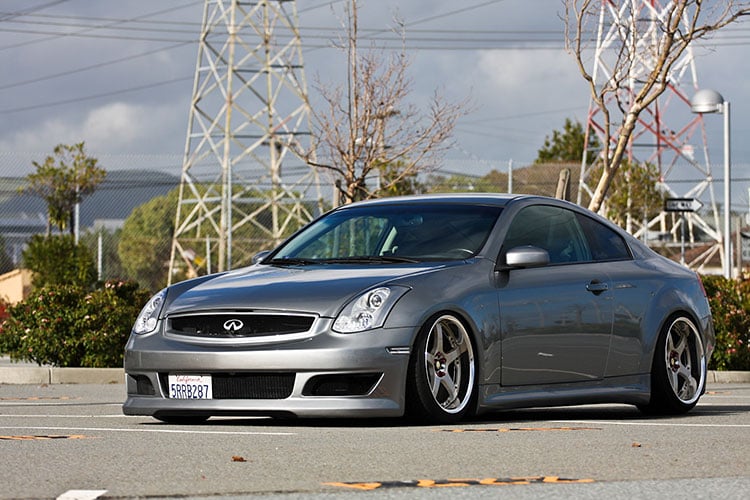
Watch out for the RevUp engines (2005-2006 manual coupes). As mentioned, they love drinking oil. The non-RevUp DE engines (2003-2004, auto 2005-2007) tend to be more reliable for budget builds.
Since the 6-speed CD009 manual transmission is solid, so we recommend finding one with that.
Our recommendations would be:
2003-2004 (Non-RevUp)
- Budget: $4,000-7,000
- More reliable oil consumption
- Watch for typical VQ35DE issues
2005-2006 (RevUp)
- Budget: $5,000-8,000
- More power but thirstier for oil
- Better transmission (CD009)
We’d skip the 2007+ V36 models – they’re heavier, more complex, and don’t offer enough benefits to justify the extra cost.
The G35 makes a great daily drifter if you’re after something a bit different from the usual 350Z crowd. That longer wheelbase means it’s more forgiving when learning, even if it won’t be as snappy on the track as some other options.
Lexus IS300
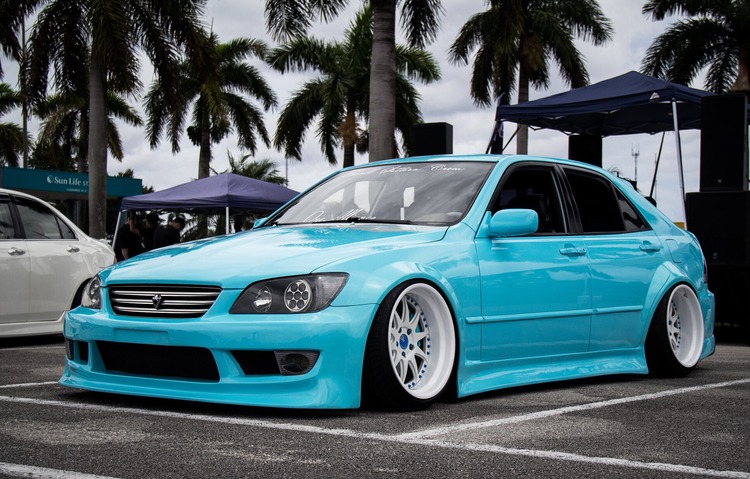
IS300s still remain surprisingly affordable in 2025 (with some obvious exceptions like the one above, of course!) We found some higher-mileage examples for around $4k, though you’ll need to look a little harder than you used to.
The IS300 is best known for its 2JZ-GE engine. While it’s the baby brother to the Toyota Supra’s legendary turbo 2JZ-GTE, the naturally aspirated inline-six is incredibly durable. We’re talking 250,000+ miles with basic maintenance, and you’ll be blown away by this 415,000-mile teardown that showed minimal wear.
Its double-wishbone front and multi-link rear suspension setup make for some predictable handling. Most post-2000 models came with a factory LSD, which is a huge bonus if you can find one.
Most IS300s come with a 5-speed auto, which (obviously) isn’t ideal for drifting. Manual swaps are common though, usually using either the W58 or CD009 transmission. The aftermarket support is massive, so finding parts isn’t an issue, but you will want to budget accordingly.
Our recommendations would be:
2001-2005 IS300 Sedan
- Budget: $4,000-8,000
- Look for factory LSD models
- Manual trans if you can find one (although rare!)
SportCross Wagon
- Budget: $6,000-10,000
- Rarer and heavier, but way cooler
- Auto only from factory
At 3,300 lbs, they’re not exactly lightweights, but the 215hp is enough to get you sliding. Want more power? The 2JZ-GE loves boost – you can reliably push 400+whp on stock internals with a proper NA-T setup.
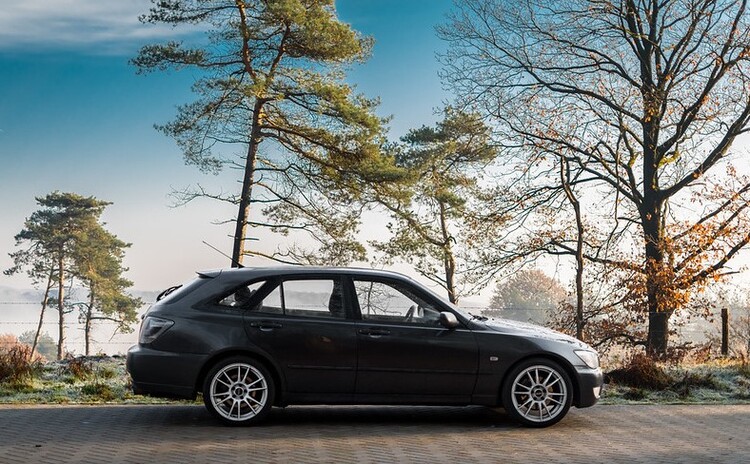
These make fantastic daily drivers that can handle heavy drifting duty on the weekends. The wagon SportCross variant provides an added dose of cool if you want to do something a little different.
Volvo 200, 700, 900 Series
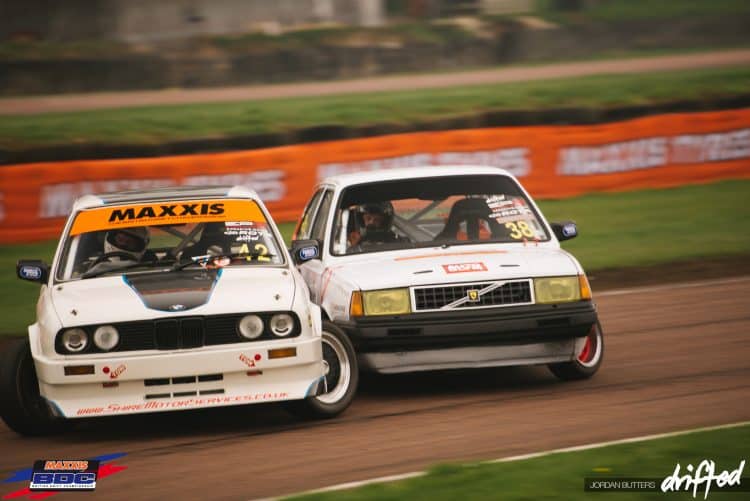
Although these Swedish bricks might not be the first thing that comes to mind when you think “drift car,” they’ve gained quite a following in grassroots drift scenes. Why? Well, it might not be for their good looks (admittedly subjective.) However, they’re cheap, nearly impossible to kill, and surprisingly capable when set up right.
You can sometimes find these for under $3k, or even less if you’re not too picky about aesthetics. While they won’t earn you as many cool points as some of the alternatives, there’s something epic about sliding a wagon that weighs as much as a small house.
The 240 is typically considered the better drift platform of the bunch. At around 2,800 lbs when stripped, it’s lighter than its 700/900 siblings and comes with a 4-link rear suspension that’s more drift-friendly. The B230 engine might only push out 114hp stock, but these things regularly clock 300,000+ miles with basic maintenance.
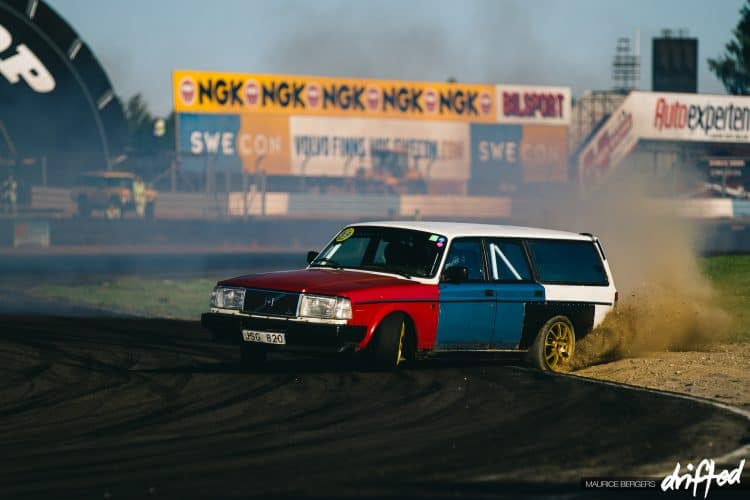
As for the 700/900 series, they bring some advantages too. The chassis is stiffer than the 240, and if you can find a turbo model (740/940 Turbo), you’ll get the B230FT engine, with around 160hp stock. Plus, wagons offer better weight distribution while standing out when being thrown sideways at the track.
Our recommendations would be:
240 Series
- Budget: $3,000-5,000 (non-turbo)
- Lighter, better suspension setup, but less power
- Watch for rust (especially floor pans)
700/900 Series
- Budget: $3,000-8,000 (turbo models)
- Stiffer chassis, more power in turbo form
- Heavier but often cheaper than 240s
The B230FK engine can easily be tuned to around 220hp with basic mods, and these things will run forever. You’ll seriously have to try really hard to kill one! This, combined with the space in the wagons, makes them perfect daily drivers.
Ford Mustang SN95
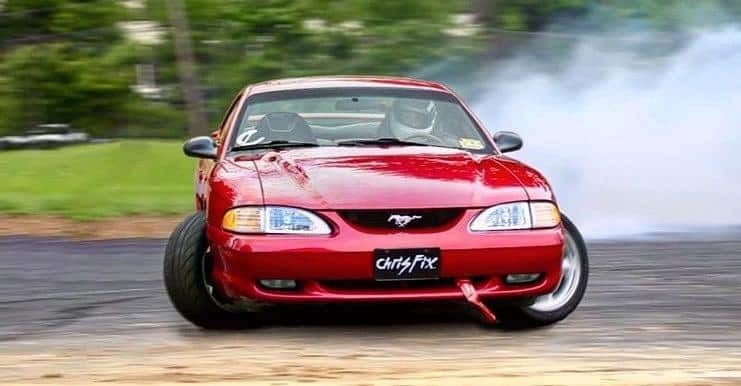
The SN95 Mustang remains one of the most affordable ways to get into drifting in 2025, with examples often available for around $4k.
Parts are everywhere thanks to sharing components with F-150s and Crown Vics, which means you won’t be waiting weeks for that replacement part to arrive from Japan.
The 1994-1995 models came with Ford’s impressive 5.0L V8, pushing out 215-240hp and 285 lb-ft of torque. Later models (1996-2004) got the 4.6L Modular V8, which might not love bolt-ons as much, but they’ll run forever with basic maintenance.
While the suspension design might be older than most of us (hello, 1970s technology!), it responds well to basic drift mods. However, you’ll definitely need to consider a welded diff, coilovers, adjustable control arms, and a Panhard bar.
Our recommendations would be:
1994-1995 GT (5.0L)
- Budget: $4,000-7,000
- More tuning potential
- Simpler to work on
1999-2004 GT (4.6L)
- Budget: $5,000-8,000
- More reliable
- Better looking (matter of taste, of course!)
Skip the 2003-2004 Cobras unless you’ve got serious cash – while the supercharged 4.6L with 390hp is awesome, it comes with a price tag to match.
One downside is weight – at 3,200-3,400 lbs, they’re far from lightweight. Interior stripping helps, but you’ll never make it as light as most of the other options. The stock steering angle is also pretty limited, though removing the rack limiters can help.
For pure budget builds, these Mustangs are hard to beat. Just don’t expect massive power gains without forced induction.
Mazda RX8
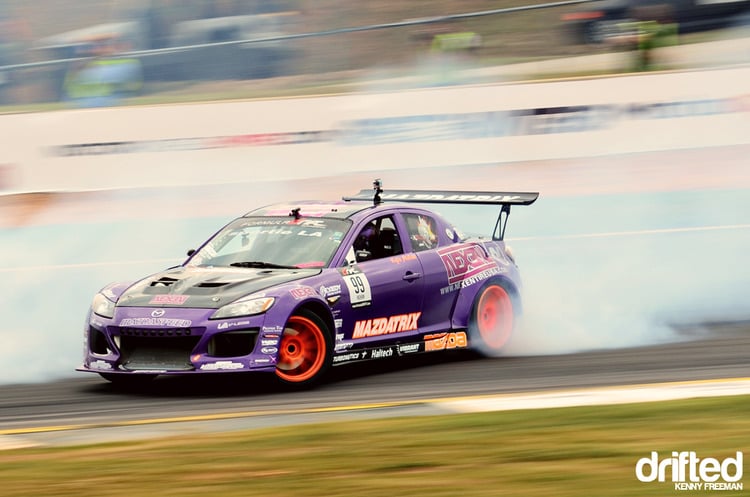
You can pick up an RX8 for around $5k in 2025, which (on paper) seems like an absolute steal (especially compared to an RX7)…. Until you realize why they’re so cheap.
Unfortunately, the Renesis rotary engine is both the best and worst part of this car.
Let’s start with the good stuff. The chassis is awesome, with near-perfect 50:50 weight distribution and a longer wheelbase than an MX-5, making it less twitchy when sliding.
Manual models come with a factory LSD, and that double-wishbone front/multilink rear suspension setup is perfect for drifting.
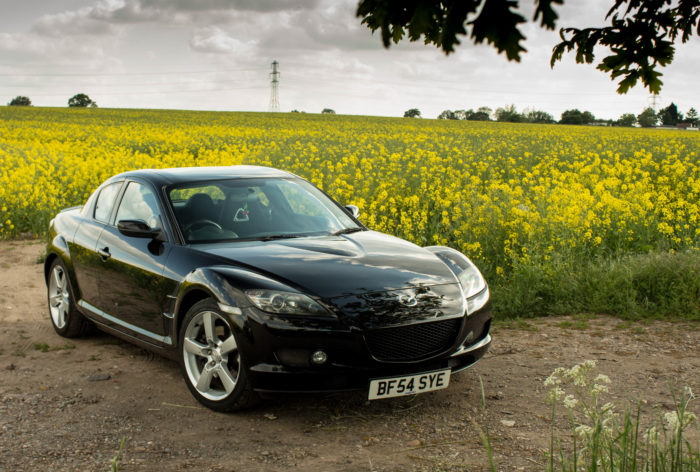
The 1.3L Renesis (13B-MSP) rotary pushes out 212-238hp (depending on the year) and revs to 9,000 RPM. However, there’s a catch – torque is mostly non-existent below 5,500 RPM, so you’ll be working it hard, which brings us to our next (obvious) point… Reliability.
These engines need to be babied and require constant attention and costly rebuilds. We’re talking anything from $4,000 to over $7,000, depending on where you go.
Series 2 models (2009-2012) got some improvements, like a third oil injector per rotor, but you’re still looking at a rebuild every 80-100k miles. And finding someone who actually knows how to rebuild these properly isn’t easy.
Our recommendations (if you’re brave enough) would be:
Series 1 (2004-2008)
- Budget: $4,000-7,000
- Manual trans only
- Check compression before buying
Series 2 (2009-2012)
- Budget: $6,000-9,000
- Improved oiling system
- Still needs regular maintenance
Whichever one you choose, always try to find one that’s had a fairly recent rebuild by a reputable garage.
Unless you’re a rotary enthusiast or know a good rotary mechanic, we’d recommend either finding one that already had an engine swap or looking at something else entirely. If you’re feeling incredibly brave, you could always consider the forced induction route!
The chassis is brilliant, but the engine requires serious commitment.
Subaru BRZ/Scion FR-S
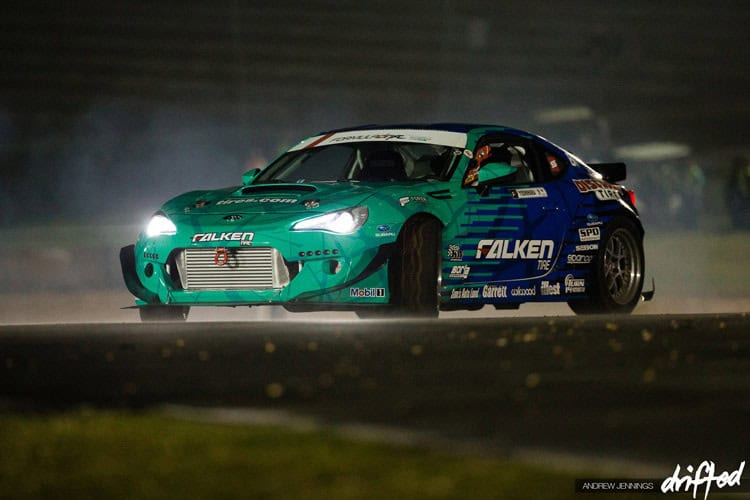
While prices vary wildly (partly thanks to the huge modding scene on offer), it might come as a surprise that you can now find these for around $6k in 2025. Obviously, you won’t get a pristine one for that, but it’s still pretty impressive for such an awesome modern chassis.
The FA20 2.0L boxer engine puts out 200hp and 151 lb-ft of torque stock. While it isn’t designed to win any drag races, the high-revving nature (7,400 RPM redline) is great for getting started. Headers and a tune can bump you to 210-220hp on pump gas or around 230hp on E85.
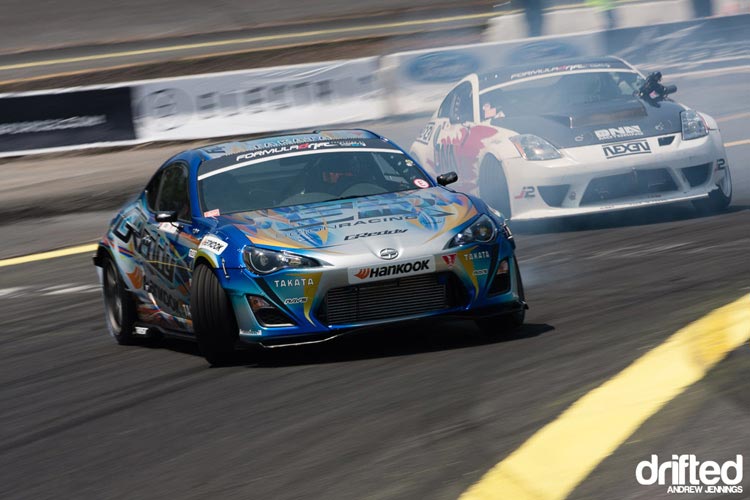
The chassis is the real star here. At just 2,700 lbs with near 50:50 weight distribution, it’s no surprise they’ve become the modern-day choice for so many pro-spec competition builds.
The FR-S actually comes with slightly softer front springs than the BRZ, which can help reduce understeer when sliding, but we’d recommend upgrading to coilovers regardless.
Our recommendations would be:
2014-2016 Models
- Budget: $6,000-10,000
- Skip the 2013s (valve spring recalls)
- Keep your eye out for ECU/injector issues
2017+ Models
- Budget: $10,000-18,000
- Most reliability issues sorted
- Better suspension setup
While it’s desirable, proceed carefully with heavily modified examples. While forced induction can get you 300-350hp, make sure it’s been done properly. Engine swaps (2JZ-GTE, K24) are also common but can get expensive fast.
There are plenty of reasons that the BRZ/FR-S platform will be the top choice for many, and quite rightly so. They make fantastic, fun daily drivers with a modern design and gadgets. They make great skid cars, too!
If you can’t afford one of these, but you’re eager to get behind the wheel and start showing off your drifting skills in just a few seconds, give Drift Hunters MAX a try!




